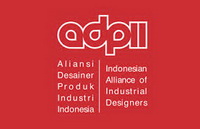Furnitur work from home berbahan olahan sampah plastik untuk hunian sempit
Abstract
The increasing human population with limited land in urban areas encourages people to live in narrow areas such as apartments, boarding houses, flats, and other living spaces that related to the function of the furniture to be designed. Plus covid-19 virus outbreak which has entered many people to work from home (WFH). With the help of technological developments that make it possible for someone to be more flexible to work anywhere and anytime without having to be physically present at the office where they work. This way of working and lifestyle makes many people need furniture that can accommodate their work activities flexibly in narrow dwellings, using processed plastic waste as a market attraction. This design uses the design thinking method, starts from observing the introduction of the characteristics of the plastic waste recycling process, collecting data and literature related to design problems, extracting ideas, and studying the typology of similar products as a basis for determining the concept of design boundaries, and developing the resulting final design. Through the steps taken, in the end, it will produce furniture made from processed plastic waste that is of visual quality, function, and market need for narrow dwellings. So, the resulting furniture is useful and brings positive things to users.
Keywords
Full Text:
PDFReferences
Agustian, Djody Permana Putra. (2020). Pengaruh Kerja Dari Rumah Terhadap Efektivitas Kerja Karyawan. Retrieved from jurnal_Mantor20200712-14897-18wggt5.pdf
Fauzi, A., & Sukoco, I. (2019). Konsep Design Thinking pada Lembaga Bimbingan Belajar Smartnesia Educa. Organum: Jurnal Saintifik Manajemen dan Akuntansi, 2(1), 37-45. DOI: https://doi.org/10.35138/organum.v2i1.50
Glynn, Caroline, Steinberg, Ingrid, dan McCartney, Claire. (2002). Work-life Balance: The Role of Manager. Roffey Park Institute.
Karuniastuti, N. (2013). Bahaya plastik terhadap kesehatan dan lingkungan. Swara Patra: Majalah Ilmiah PPSDM Migas, 3(1). Retrieved from http://ejurnal.ppsdmmigas.esdm.go.id/sp/index.php/swarapatra/article/view/43
Kompas.com. (2020). Jokowi Instruksikan Bekerja dari Rumah, Ini Arti Work from Home. Retrieved from https://www.kompas.com/tren/read/2020/03/16/195035165/jokowi-instruksikan-bekerja-dari-rumah-ini-arti-work-from-home
KominfoJatim. (2014). Produksi Sampah Plastik Capai 5,4 Juta Ton Per Tahun. Retrieved from http://kominfo.jatimprov.go.id/read/umum/38482
Martua, Saut. (2020). 5 Tren Unik Dunia Kerja Di Masa New Normal Menurut Riset Microsoft. Retrieved from http://www.kalderanews.com/2020/07/5-tren-unik-dunia-kerja-di-masa-new-normal-menurut-riset-microsoft
Mungkasa, Oswar. (2020a). Bekerja dari Rumah (Working From Home/WFH): Menuju Tatanan Baru Era Pandemi COVID 19. The Indonesian Journal of Development Planning 4.2. Retrieved from https://journal.bappenas.go.id/index.php/jpp/article/view/119
Mungkasa, Oswar. (2020b) Bekerja Jarak Jauh (Telecommuting): Konsep, Penerapan dan Pembelajaran. Bappenas Working Papers. 3(1). Retrieved from http://workingpapers.bappenas.go.id/index.php/bwp/article/view/52
Muharam, Aga Nugraha. (2009). Menata Furniture Diruang Sempit. Jakarta : Griya Kreasi
Moore, Fiona. (2007). Work Life Balance: Contrasting managers and workers in an MNC, Emerald Group Publishing Limited, Vol. 29, Number 4.
Mola, Z.F. (2008). New Small Spaces. New York : Collin Design
Nurhidayat, M. (2020). Perancangan dan Pembuatan Meja Kursi Multifungsi Hemat Ruang Untuk Dengan Lahan Terbatas. Retrieved from https://dspace.uii.ac.id/handle/123456789/24007
Potter, E,E. (2003). Telecommuting : The Future Of Work, Corporaret Culture, and American Society. Journal of Labour Research, 73-84.
Mulyana, A. F., Prasetya, R. D., & Jayadi, N. (2023). Perancangan produk furnitur co-working space dengan konsep open space. Productum: Jurnal Desain Produk (Pengetahuan dan Perancangan Produk), 6(2), 63-68. DOI: https://doi.org/10.24821/productum.v6i2.9149
Putra, Hijrah Purnama, & Yebi Yurindala. (2010). Studi Pemanfaatan Sampah Plastik Menjadi Produk dan Jasa Kreatif. Jurnal Sains dan Teknologi Lingkungan 2.1: 21-31. https://journal.uii.ac.id/JSTL/article/view/3579/3169
Santhi, D. (2016). Plastik sebagai kemasan makanan dan minuman. Padang: PSPD FK UNUD. Retrieved from https://simdos.unud.ac.id/uploads/file_pendidikan_1_dir/b08f2213f6fac505e71538badabaaf19.pdf
Vidyaprabha, K., Susanto, E. T., Jayadi, N., & Prasetya, R. D. (2022). Desain Kabinet Multifungsi untuk Ruang Sempit Apartemen. Jurnal Desain Indonesia., 4(1), 25-33. DOI: https://doi.org/10.52265/jdi.v4i1.169
DOI: https://doi.org/10.24821/productum.v7i1.4687
Refbacks
- There are currently no refbacks.
p-ISSN 2477-7900 | e-ISSN 2579-7328

This work is licensed under a Creative Commons Attribution 4.0 International License.
Like & Follow Us










